
Minimum Viable Product: Why Your Startup Really Needs It

Amazon lost around $170 million on Fire Phones. The Juicero startup that invented an IoT juicy maker had to shut down. The list of ideas that didn’t make it can go longer, much longer.
The truth is, 9 out of 10 startups fail in the first year, and only a quarter of the survivors make it to the 15-year anniversary. The reasons for such a low success rate range from the uselessness of the idea itself or its unjustifiable cost to the money problems on the way and failures in location and audience targeting.
Luckily, there is a magic wand called MVP.
Why magic? And why the wand?
Well, let us explain below.
Table of contents
What is a MVP?
MVP stands for a minimum viable product. It is a limited version of your end product that has basic functionality and targets fundamental market needs. The minimum viable product in a startup allows young entrepreneurs to analyze and evaluate their ideas based on the real market data while spending a limited amount of reasonable resources (both financial and human).
Prototype vs. MVP vs. Product
Most often, startups have trouble understanding why they need an MVP. On top of that, experienced developers would also advise developing a prototype before getting to the MVP stage. And then, there is a final product that has the same features and functionalities as an MVP. So the confusion gets even deeper. Let’s dot the i’s and cross the t’s to differentiate these concepts from one another.
A prototype is a logic and theoretical image of a product. Prototypes frequently come in the shape of sketches (paper- or digital-based), which define the tentative design of the future product and demonstrate the logic behind it. Yet, they do not allow clicking or tapping through them to try how the future solution works.
Minimum viable product development is the next stage of product creation. Based on the design and logic defined in the prototype, the working version of the product is built. It might have a basic design and lack many end-product features, but it will allow a user to utilize the primary function of the product.
The final product is what gets released to the market. It has an enhanced design, more features and presents a fully functioning product that can compete in the market. Basically, it is a better version of an MVP with more functional possibilities.
To put it into perspective, check out the table below.
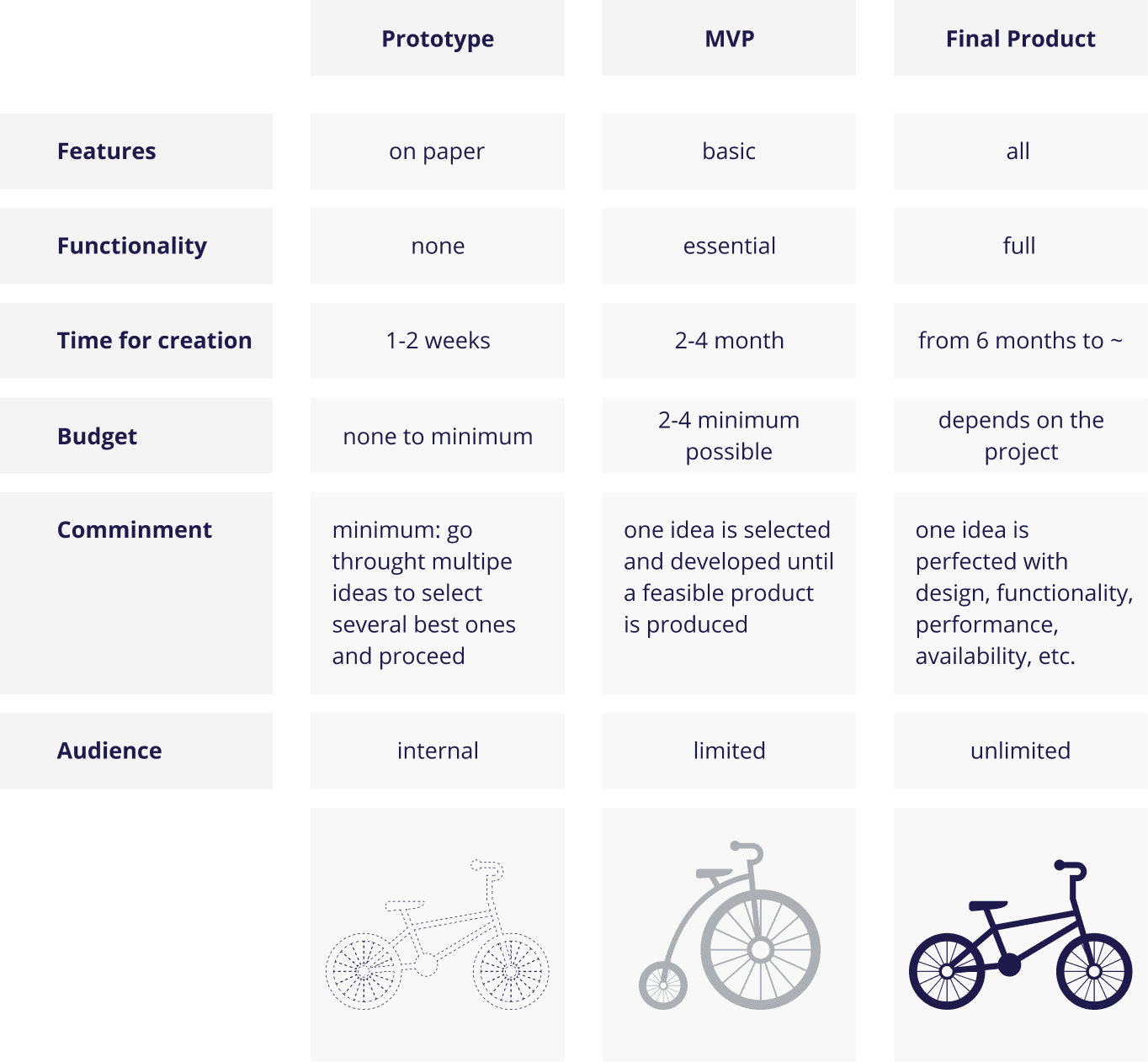
Understand MVP right
When you read “basic” features, “essential” functionality, and “minimum” budget, it might seem that you are working on something cheap, inefficient, and dull. However, this is a complete misconception of the successful MVP essence.
Yes, a minimum viable product has limited features and functional elements, but in no case does it mean that it cannot fulfill the user’s needs. Meanwhile, it does not mean that if you strip the final product of several functionalities, you will get the original MVP. The difference is a bit deeper.
And to visualize it, we would turn to the cupcake model of product development.

This model stresses a critical idea: an MVP is a smaller yet complete version of the final product. It has fewer features and less elaborate design, but it is still desirable. It does have the nice icing (design) and the tasty filling (functionalities), yet it only offers a couple of bites (features) to the consumer, just as a cupcake does.
As a result, after building an MVP, in this case, you get a more affordable, simple version of the final product that makes end-users want more. Then, you add more layers (features/screens), fresher icing (greater UI), taster filling (more consumer-focused functions), and end up with an entire wedding cake.
Why do startups need an MVP?
Getting back to the magic wand analogy, an MVP can show startups the direction for further [custom website development], hint at the valuable features, or transform the idea into a lucrative business that can withstand the upcoming years.
Even this statement sounds like a well-enough reason to create MVP for a startup. But we will go further, showing exactly how an MVP can save a young business. Here is why startups need MVP.
1. Market palpation. Founders always believe in the success of their ideas because otherwise, there would be no reason to start a project. Yet, external factors, such as startup location, timing, time of year, etc., might be precisely against this particular idea. Verify these factors before diving into full development.
2. Idea validation. The idea for any startup is to solve a problem. For example, Uber solved the problem of getting home when a taxi is too expensive; McDonald’s offered its customers a fast meal that is ready in seconds. An MVP allows testing whether your idea tackles such a global issue for potential customers and whether they are interested in the solution. If not, then you either need to reconsider the concept or just move on to the next one.
3. Smart resources allocation. After the initial release, you will collect market feedback on your project. This data can help understand globally whether the idea is worth it. Being a wand, an MVP helps identify the particular features that need improvement or further development and which ones are less attractive and can be postponed or eliminated.
4. Lighthouse customers acquisition. These can be test subjects who liked your minimum viable product or just some interested members of the potential audience. The more people you can embrace during the MVP testing, the greater the audience base you can get for the product launch. Lighthouse customers are basically influencers who will be spreading the good word about your MVP and then end product to nurture your target audience.
5. Investment recruitment. One of the essential MVP benefits is the possibility to raise money. Investors like seeing and touching a product to understand its value. Give them a chance to see your product in action: demonstrate the MVP, provide market research and statistical analysis, and pitch your plan for further product growth.
6. Development testing. While building an MVP, your team will face many obstacles, complications, and blockers. You will learn to overcome those, plan the development efficiently, and build the dream team for scaling. MVP development is a dry run to make mistakes and fix them until the scope is not so big and cannot impact the project globally. It is the perfect way to get ready for the product development process.
7. Reduced time-to-market. Why do startups need MVP? Because they can get to the market faster and start returning their investment faster. Development and marketing for a small product require fewer resources, including time. So, get to the pool of competition earlier to gain credibility, establish the brand, and then begin taking the lead with a more advanced product.
Want to build an MVP?
Get a professional tech consultation and project estimation
Examples of successful MVP launches
To see the benefits of [MVP development for startups], read the real-life stories of successful multi-millionaire companies that are all over the news.
Etsy
Robert Kalin, Chris Maguire, and Haim Schoppik created the initial Etsy website back in 2005. They took eBay as the role model for their idea but improved it based on the customers’ complaints online. One would say that eBay was the MVP for Etsy, and from some point of view the concept of a marketplace has truly been verified and confirmed. But at that time, there were thousands of similar websites built and no one knows their name today. The truth is, the founders attracted people by allowing them to sell and buy things without any charges at the very beginning. Regularly released new features have kept the audience in place as well. The development was cheap and effective.
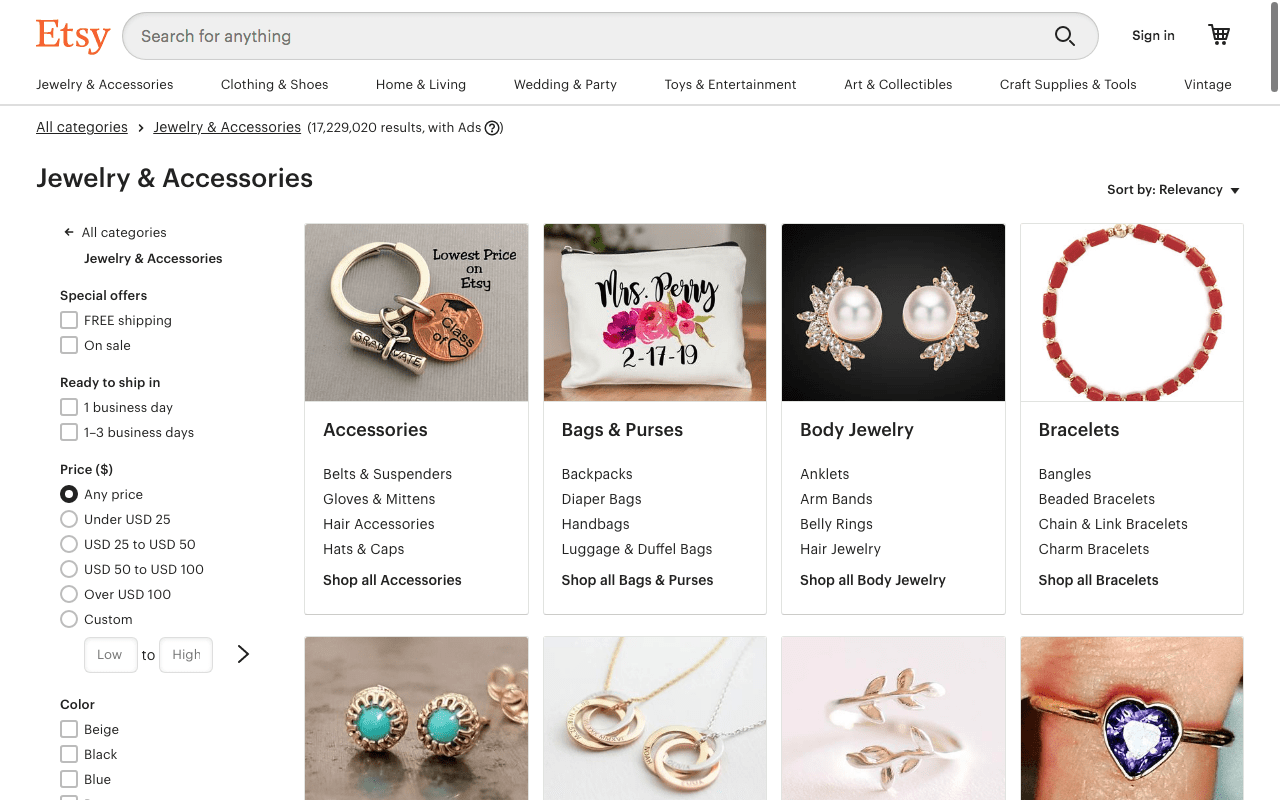
Two years later, when the first real investment went into the account for Etsy and the idea was battle-proven, Kalin started scaling up the website, creating the strategy for categories and niche products. In Q4 of 2020, the company had 13 million of active users, 7 million of re-activated users, and the revenue of almost $270 million.
Airbnb
Brian Chesky and Joe Gebbia launched a simple website airbedandbreakfast.com to earn some extra dollars. Their website was the MVP; it was a basic website that offered a bed and a home-cooked breakfast in San Francisco at $80 per night.
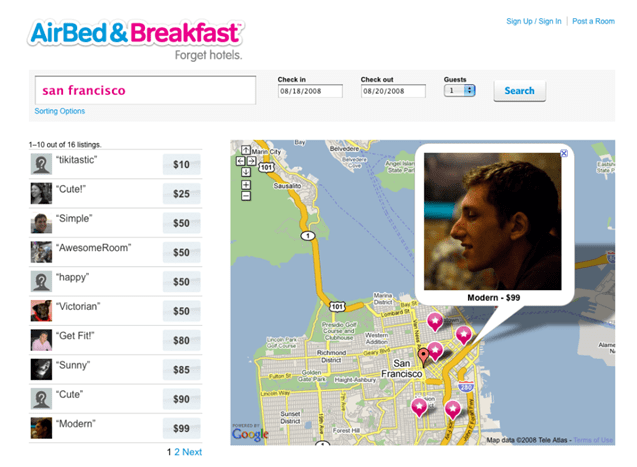
After the first primary success, there was a struggle to get the idea going for a couple of years. The founders played with offers and business focus, but eventually, they returned to the original idea and concentrated on developing its crucial features (photos of the places, host’s stay presentation, customer experience, and feedback on the service). In 2020, the company earned $3.4 billion in revenue, and it is currently serving 193 million people around the world.
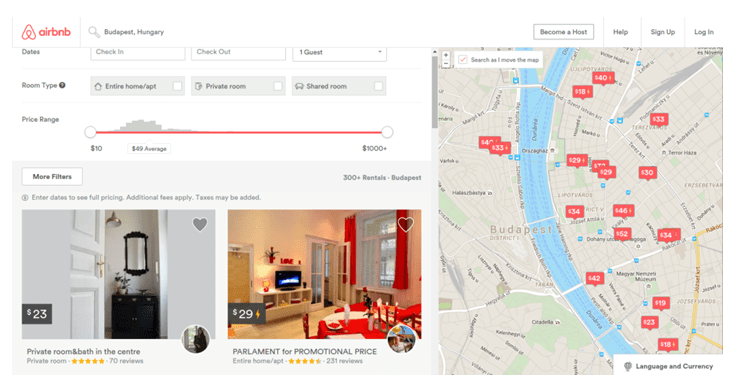
Spotify
When Spotify MVP was created, it aimed at fighting piracy in the music industry while providing the audience with an almost-free music service. Daniel Ek and Martin Lorentzon launched a simple website that offered music streaming. They tested it for about two years before the first significant investment into the company was made.
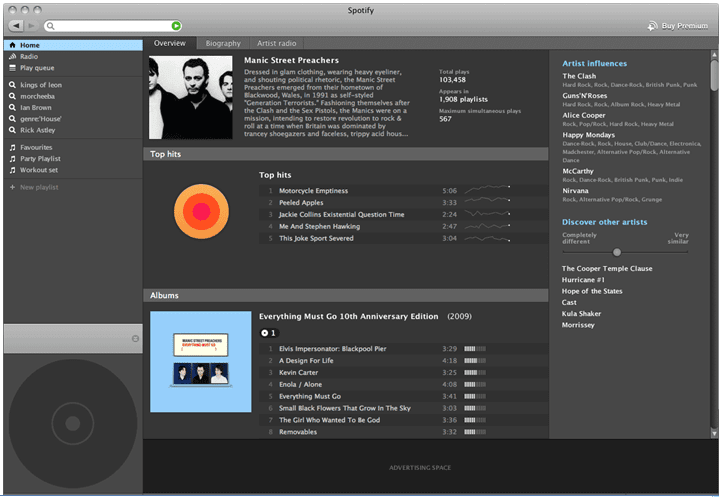
Now Spotify has earned its spot under the moon, and it proudly serves 345 million users across 178 markets with its revenue reaching €2,623 million last year.
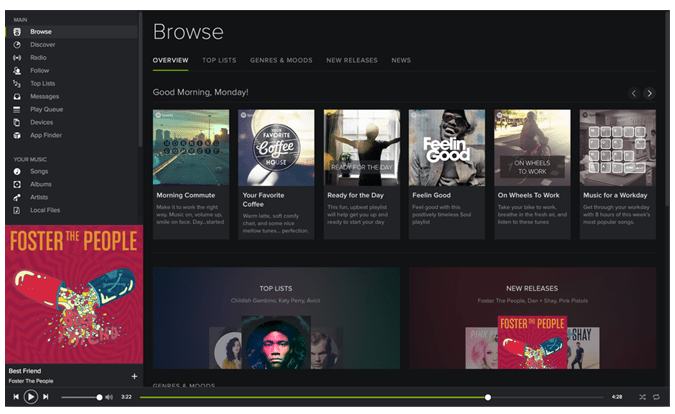
Groupon
Today’s Groupon was not planned as the service for selling group deals for a particular service. Mason’s initial goal was to get people together over some idea and get them interested in investing in it. But after the website failed, he needed to revive it. He made several tries by amending the website and, in fact, developing a line of MVPs to test each idea.
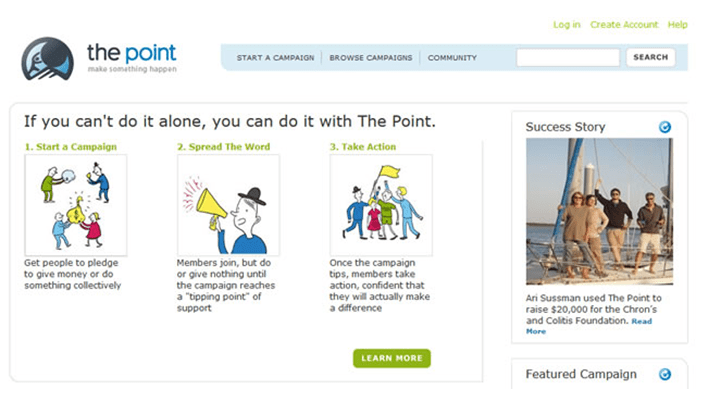
And this is when Groupon came upfront. The website was only collecting people’s emails and sending them the coupons for local services, and this was done manually (Andrew Mason was sending emails with those generated PDFs). This website was the initial MVP of today’s $1,417 billion business.
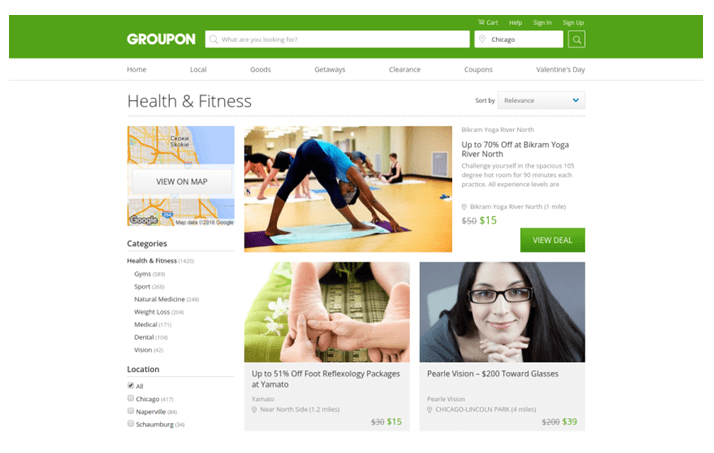
Besides the four profitable examples of MVPs above, you can also include companies like Twitter, Shutterstock, Buffer, Facebook, Amazon, DropBox, Zappos, AngelList, Foursquare, and many others to this list. All of them peaked in their popularity, and yearly financial reports have started from testing their idea through the MVP launch. And only after collecting market data and polishing their unique offer, they went on to full development.
Want to build an MVP?
Get a professional tech consultation and project estimation
MVP development process
Now that you know what MVP is and the real-life success stories, it is high time to dive deeper into how to build an MVP: its stages and the must-have features for every minimum viable product.
When do you need an MVP?
As you remember, the development of a fully-featured product without testing its essence first is never a good idea. So the simple answer to the “when” question is ALWAYS. You always need a minimum viable product to verify whether your idea works, how the market reacts to it, and if potential customers are interested in your offer. Building MVP for startups is not a choice but an actual necessity.
MVP development stages
1. Discovery and research
Startup creators frequently have an idea of the perfect solution that would revolutionize the world. However, after a couple of simple following questions, the idea might not seem as good as it is:
- What problem will your product solve?
- Who will your product solve problems for (who is your target audience)?
The trick is, developers can create pretty much anything you imagine. It is all a matter of time and money. Yet, if you are willing to become a unicorn startup, then you definitely need to have the answers before going all in.
Example
- Problem: Older people cannot contact their grandchildren with mobile phones due to tech illiteracy, small phone screens, and health-related limits (arthritis prevents them from typing).
- How to solve it: Develop a device with software that would read the incoming texts and transform the speech into text messages. The device should also allow the elderly to send those messages without physically going through the phone book to search for the right contact.
- Target audience: People of age 70+ with health issues.
2. Market research
This step is dedicated to researching the current market offer and studying your potential competition. You should not only go through the obvious google search results but also check patents to ensure that your idea has not been launched before.
If a complete analog of your idea has already been introduced to the market and you have not heard of it, this means your idea needs improvement and more work. Consider every device or software of similar nature as a competitor since you might even borrow some features from them to amend your concept for the better.
Example
There are speech-to-text applications whose code you can use in your new device.
3. SWOT analysis
Go over your idea, compare it with the researched market data, and define your MVP benefits over the competition. Make a list of your strengths and weaknesses as well as opportunities and threats.
Example
- Strength: you have a motivated engineer on the team to build the device
- Weakness: you need a development company to work on the software part
- Opportunities: the device and idea are unique, there are no analogs in the market; the target audience is quite large, and the demand for such a device is high
- Threats: this is still a new device that the target users might reject
4. Customer journeys (UX)
You know what the market stores, and you know your problem, so you have all the information to introduce your MVP definition via mapping the user journeys. By visualizing the essential connections, you can see the gaps and even pre-test your idea. Just ask your friends and relatives whether your user journeys make sense. Sometimes startuppers feel so confident with their idea that they might overcomplicate things for the end-users.
For customer journey planning, you will need to know which steps a user needs to take to solve the introduced problem.
Example
An older person receives an SMS to their phone > your device sends a sound signal about it > the older person clicks on a physical button to listen to the message > your device reads the message from the phone and reproduces it via a small speaker to the elderly
An older person wants to send a message to their grandchild > they click on a button to record a message > the device sends an audio signal to begin recording> records it > transcribes it into text > the older person pushes a button to send the message to a particular contact (the button has been pre-defined)
5. List of features
While you have an idea and an image of the final product, you need to strip it of any fancy elements to make a successful MVP. Specify which elements, features, and functionalities are essential, then list the desirable ones with a particular priority.
When building an MVP, you should stick only to the high-priority functionalities to solve the end-user’s problem. The additional nice-to-have ones can be added later, when the idea is confirmed, after the MVP tests, and you get down to the full-scope development.
Example
In our example, the must-haves would be:
- Buttons
- Speech recognition
- Speakers
- Connection to the device (wired)
The desirable yet not essential ones would include:
- Different voices for different contacts
- Different sounds for messages from different contacts
- Wireless connection between the device and the user’s phone
6. Design and prototype/wireframes
At this point, you already know how the idea would work, so you only need to build a good-looking interface for it and make it usable for the market. This is the step when startups targeting software and app development would need to work on the user interface of their solutions and create wireframes (digital prototypes) of the new platform/website/app.
Example
Since in our example we have both a physical device and a piece of software working together, this step means planning the physical appearance of the device, size and colors of buttons, text, etc. In terms of software design, architects and developers would elaborate on the software’s logic and features.
7. Development and testing
Testing in the MVP development process is obligatory for every feature and new addition. While building your device or solution, try to test it often, collecting feedback and amending your design, features, functionality, and concept on the go.
After you build the basic MVP, let your employees test the product. Of course, when a startup is small, there might be no organization. But if you are working with an offshore team on your [startup website development] or application creation, consider asking their teammates to test the new solution.
After the Alfa tests are performed, and the changes are made, send your MVP to the market and see what the users have to say. For end-user (Beta) testing, you can check free online websites like Quora or BetaList. And remember to keep your social media presence by advertising your new MVP there. The more early adopters you can collect at this stage, the easier would be the launch of your final product.
Example
For the Alfa tests, ask your grandparents and their friends to try the functionality you are offering. As the actual market members, they will have an insightful opinion on the product and its features.
For the Beta tests, you can go to a nursing home or hire a target group.
After these seven steps, you are ready to get to the broader audience and further pitches to investors. Test your end-version MVP for some time to gain a more comprehensive understanding of the benefits it offers and the challenges the users might still face. It will help with the end-product improvement.
How much does MVP development cost?
Money is always a crucial element of business development because the lack of it blocks the whole product improvement. Time is of the essence as well because a COVID-tracking app, for example, might not be of value in a couple of years.
The average product development lasts 6-12 months and costs about $40,000-$60,000 for a simple app, $60,000-$120,000 for a medium-complexity application, and $120,000-$200,000 for a complex solution.
Now imagine, then you invested $200,000 and a year of life into an application that is redundant. This would be a huge loss of resources and the spirit as well.
If in the process of [mobile app development for startups] you go through the MVP stage, you can spend only a couple of months and up to $20,000 for an MVP of the complex idea. While the loss of $20,000 for a non-working idea is still a hit, it is ten times smaller than the loss described above.
A final note
Building MVP for startups is always a challenge through which a young business learns the development process, researches the market, and familiarizes with its target users. Minimum viable product development can save a lot of time and money to an entrepreneur while also expanding the view on the idea and perfecting the offer.
If you are looking for an experienced team to create MVP for a startup, Fruitful Code experts are here for you. Our team worked with a wide range of startup teams and businesses over the past ten years. We know the unexpected pitfalls, smart workarounds, and effective processes to bring your idea to life with a short timeline and limited budget. Whether you need a consultation or a full-on service team to turn your idea into a successful MVP, Fruitful Code is ready to help!
Learn more about our services and write to us about your innovative solution. Let’s disrupt the world together!
Related Articles

Tell us about your project
Write us about your idea or project and we will respond with a draft offer to start a discussion




